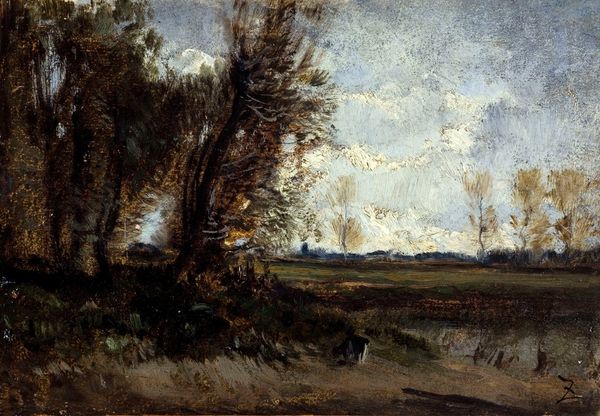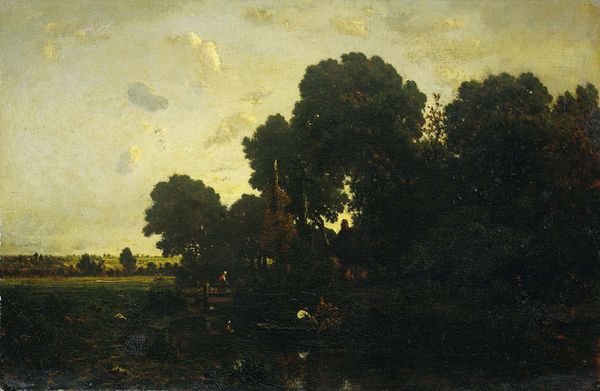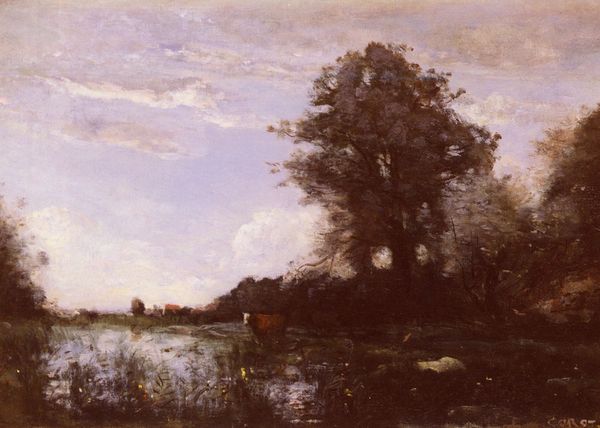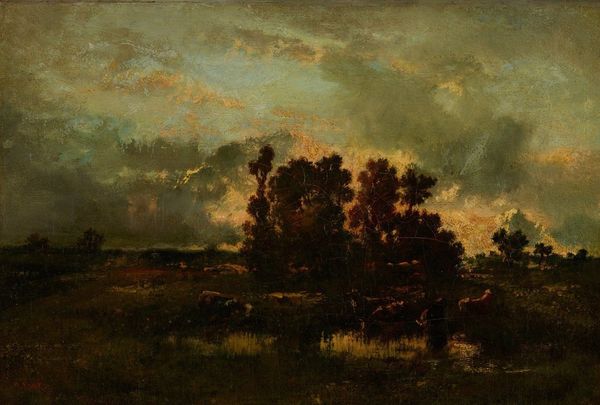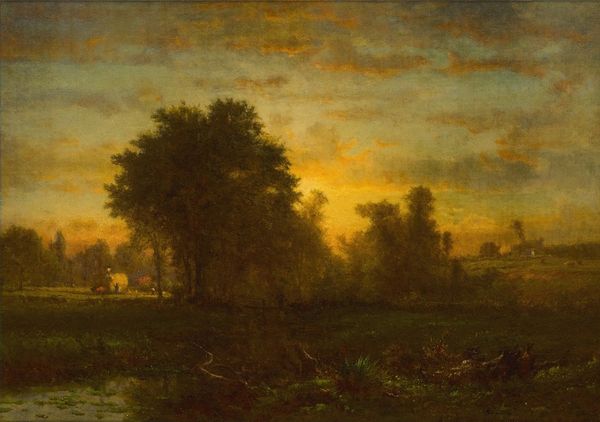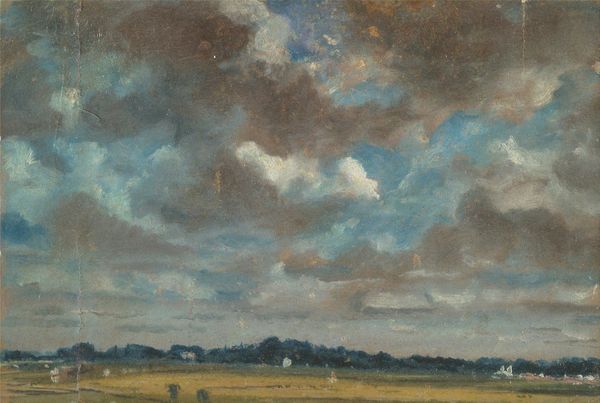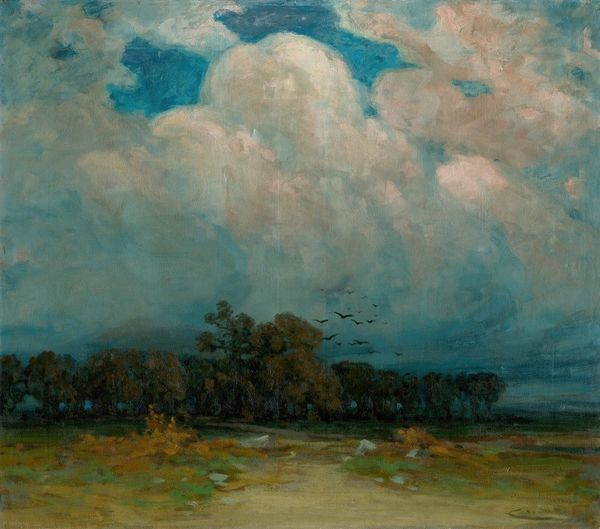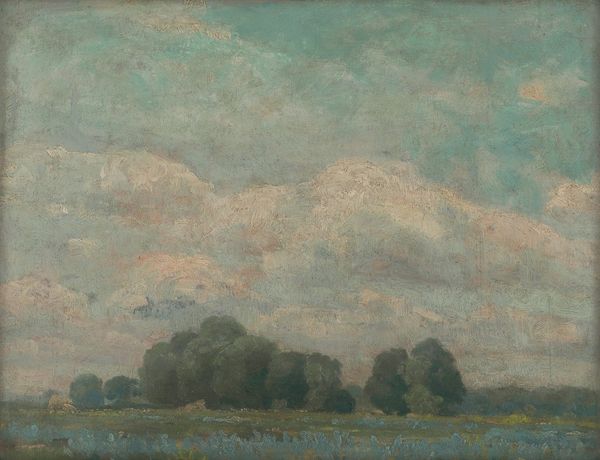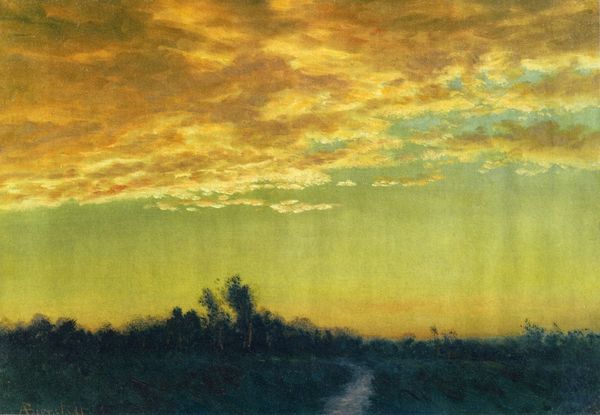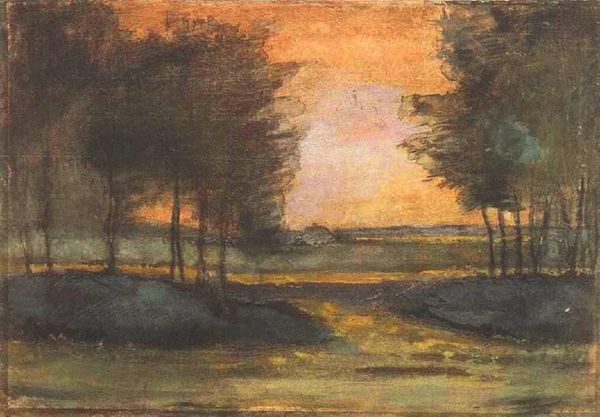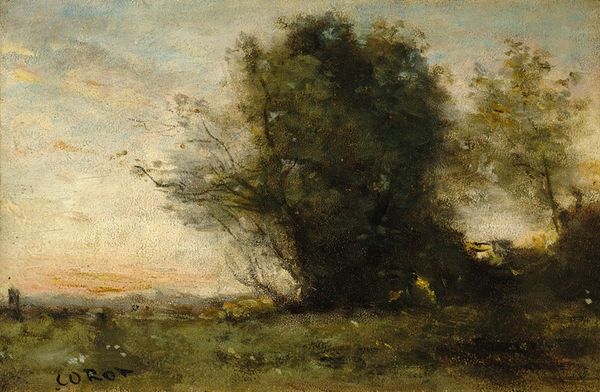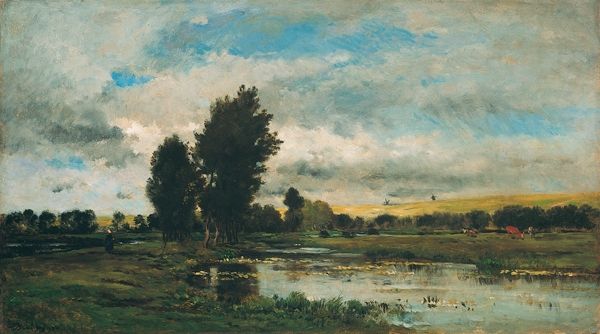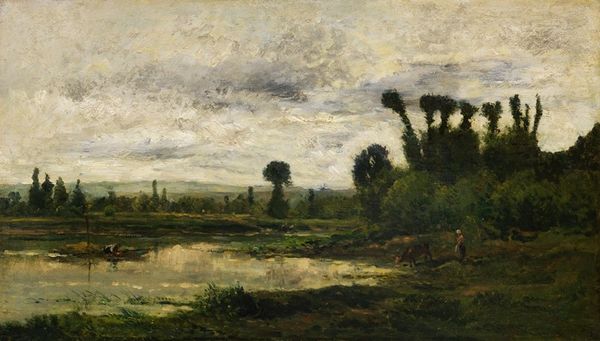
painting, plein-air, oil-paint
#
sky
#
lake
#
painting
#
impressionism
#
plein-air
#
oil-paint
#
landscape
#
impressionist landscape
#
oil painting
#
romanticism
Copyright: Public domain
Curator: Before us is a captivating oil on canvas titled "Edge of the Forest, Sun Setting", attributed to the 19th-century artist Theodore Rousseau. Currently part of the LACMA collection, it presents a quintessential Barbizon School landscape. Editor: It’s immediately striking how brooding it is, actually. That deep band of clouds, those dark silhouettes of trees – there’s a lot of visual weight pulling down. It almost feels melancholic. Curator: I agree. Rousseau was part of a larger movement that emphasized a return to nature, but in a way that highlighted its sublimity and also man's small place within the cosmos. Think of the sociopolitical context: burgeoning industrialization and anxieties surrounding modernization were beginning. Artists looked back to nature as a sanctuary. Editor: That’s interesting. Knowing that, those darker hues suddenly seem more loaded. It’s not just a sunset; it's a kind of lament for what's being lost to industrial growth. This reflects a particular vision of nature: untouched, maybe unattainable in that period. It reflects concerns about industrialism. Curator: Absolutely. He and the other Barbizon painters often faced criticism for their departure from academic art, which idealized its subject matter with more clearly delineated details and themes suitable for a royal class. Rousseau wanted to create an emotional experience, and give visual importance to ordinary scenes like these, imbuing nature with a dignity it had been denied. He exhibited regularly at the Parisian Salon, challenging the dominant visual culture of his time. Editor: It feels particularly relevant now, as environmental anxieties and climate change threaten so many ecologies around the globe. An artist attempting to portray the inherent value and fragility of nature… well, it speaks directly to our contemporary crises. Maybe this little oil sketch asks the audience to fight for that. Curator: Well said, the painting embodies a complex web of aesthetics, social commentary, and art historical importance, capturing not only the beauty but also the precariousness of the natural world during a pivotal point in history. Editor: Looking at this piece through both a historical lens and present context only amplifies its evocative power, really allowing us to consider our own connection with nature and preservation.
Comments
No comments
Be the first to comment and join the conversation on the ultimate creative platform.
